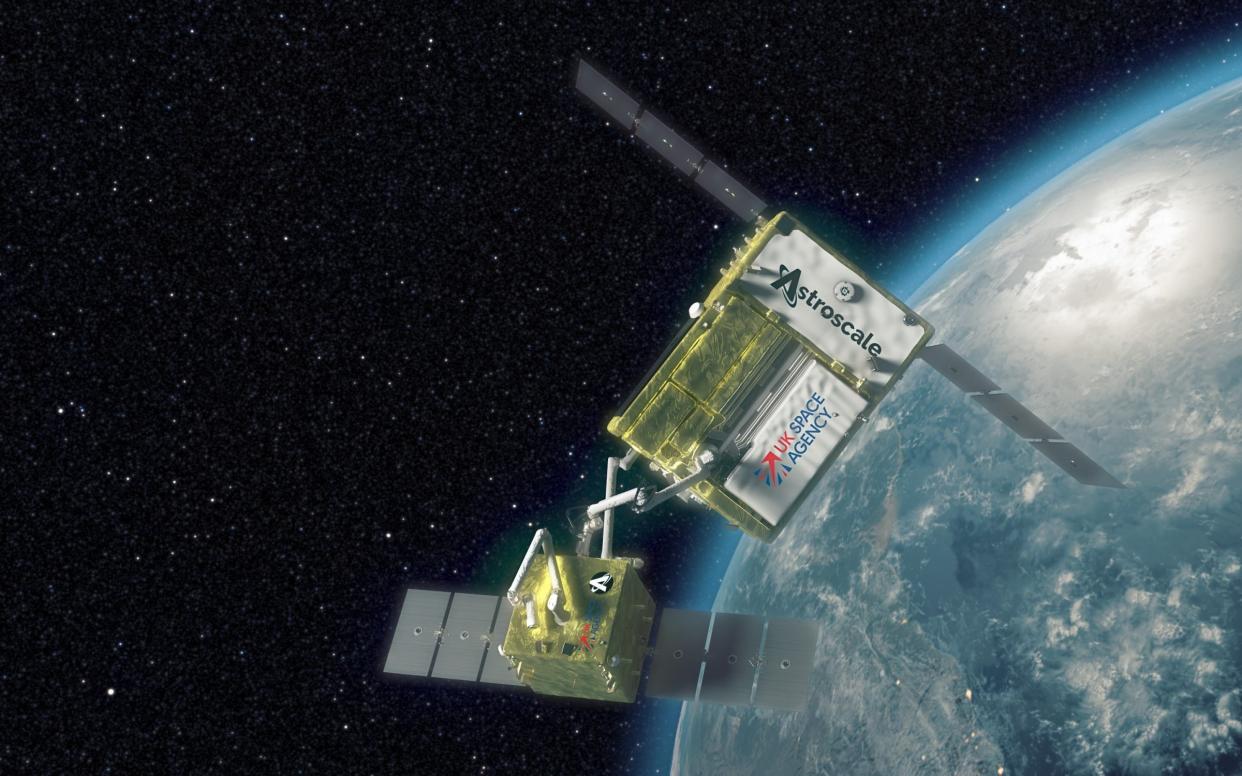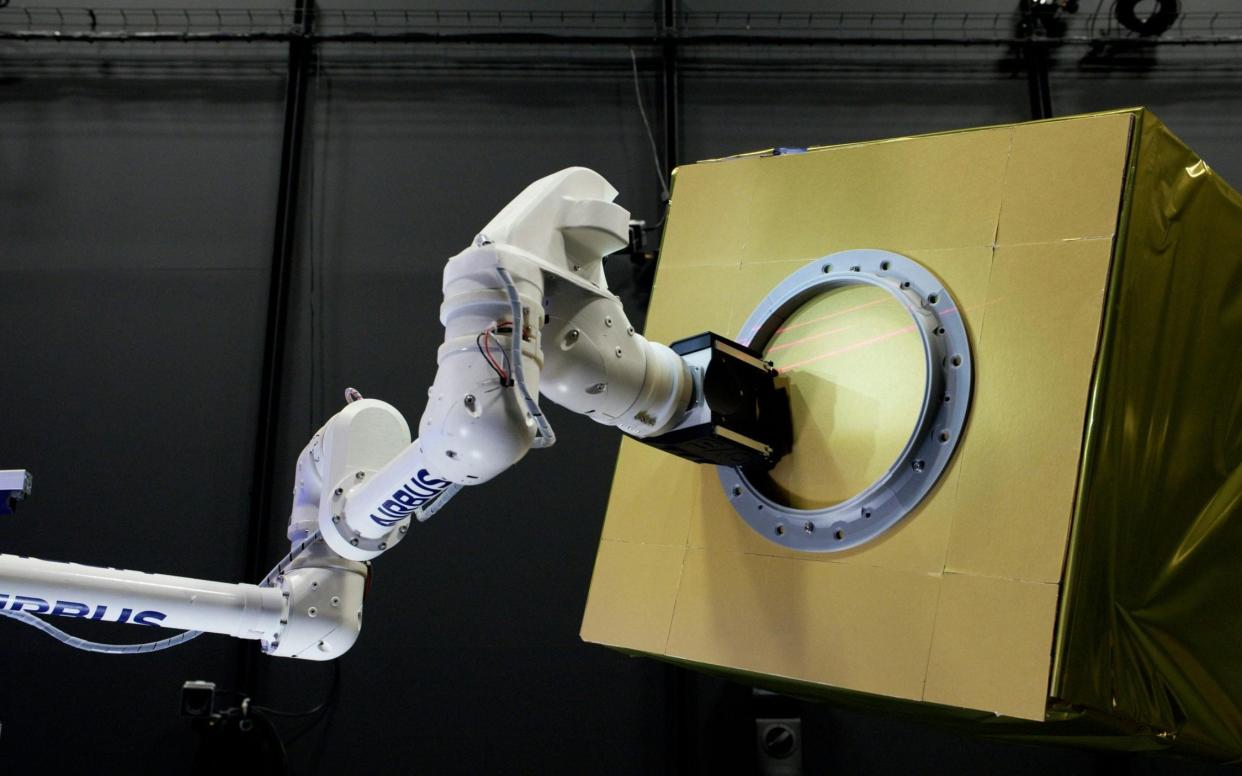Watch: British ‘robot binmen’ set to clean up the waste of space

Britain is planning to deploy robot binmen to grab space garbage and drag it out of orbit so that it can burn up in Earth’s atmosphere.
This week, Oxfordshire-based Astroscale successfully tested out a robotic arm, which will be attached to its litter-picking spacecraft.
The arm, built by Airbus, is designed to grasp the metal rings, which keep satellites attached to rockets during take-off. It is a useful target because all satellites must have one.
Removing dead satellites is crucial to prevent space becoming dangerously overcrowded.
Nick Shave, the managing director of Astroscale, said: “We’ve got 10,000 tonnes of debris that’s been there since the start of the space age and there is a lot of legacy debris in some very useful orbits.
“You’ve got very big satellites and rocket bodies, and little bits that are left there, that we need to start clearing up because more and more constellations that are providing services to us are having to do collision avoidance manoeuvres.
“People are also getting worried about going into space, and there’s now even a phrase called ‘getting through the Starlink shell’ because there is essentially a massive shell of satellites that you have to navigate, so we’re really starting to see a big traffic problem in space.”
There are currently more than 10,000 satellites orbiting the Earth – a four-fold increase since 2019 – and numbers are set to grow exponentially in the coming decades.

Some 400,000 satellites have been approved globally for low Earth orbit, with SpaceX alone poised to launch another 44,000 for its Starlink internet constellation.
Experts have predicted that once all the planned internet constellations are operational there will be around 16,000 decaying satellites at any one time that will need to come out of orbit.
Not only are the dead satellites clogging up valuable orbit space but they risk setting off a major disaster.
In 1978, Donald Kessler, a Nasa scientist, predicted that when enough objects are in low Earth orbit, any collision would set off a catastrophic chain reaction that would send wreckage into the path of other satellites, breaking them apart and releasing more debris.
It is known as Kessler Syndrome and the subsequent swirling debris cloud of bullet-fast wreckage would make space inaccessible for everyone, and wipe out critical satellite systems.
To tackle the problem, Astroscale has partnered with the UK Space Agency, the European Space Agency and Airbus on the Cosmic mission (Cleaning Outer Space Mission Through Innovative Capture), which will remove two defunct British satellites currently orbiting Earth.
The mission has just finished its design review and is expected to move into the implementation phase before launching in 2026.
Litter-picking fleet
If all goes to plan, the company plans a fleet of litter-picking, fuelling and satellite servicing spacecrafts, which could even launch from British soil once the country’s spaceports are operational.
The robotic arms could even be used for assembling larger structures in space.
Catching a tumbling satellite in orbit has proved challenging and the team has employed gaming technology and artificial intelligence to achieve the precision required.
Elie Allouis, the head of advanced concepts and robotics at Airbus, who led testing at the Satellite Applications Catapult near Didcot last week said: “It’s like a complex space ballet.
“You can do a lot of things if you can catch a satellite in space; repairs, refuelling as well as de-orbiting at the end of its life.
“We have to be sure this is going to work, because the last thing we want to do is create more debris. This week’s tests have been very successful and we’ve got a lot of data that can help us make improvements.”
Astroscale is also planning to launch a spacecraft called Elsa-M, which has a magnetic capture mechanism to grab satellites so they can be manoeuvred to a different location or brought back to Earth.
Satellites have been fitted with a matching magnet and the company is hoping to carry out the world’s first de-orbiting mission using the technology next year.


